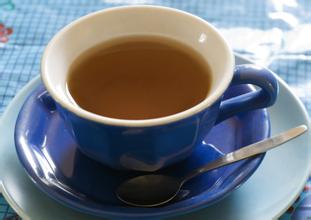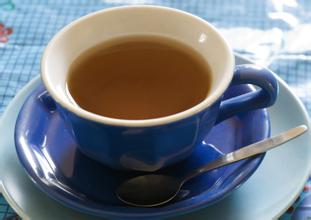Introduction to the method of grinding and calibration for the flavor description of Nicaraguan boutique coffee
Nicaragua Fine Coffee Flavor Description Taste Variety Characteristics Grinding Scale Treatment Introduction
Coffee is Nicaragua's main export product. Nicaragua's total coffee production for the 1998/99 coffee year could be 12 per cent lower than in 1997/98 due to the poor harvest in the Pacific region, according to the president of the Nicaraguan Coffee Farmers Federation. Nicaragua harvested a total of 1.422 million bags (46kg/bag) of coffee in the 1997/98 coffee year, the best harvest since coffee production hovered around 1 million bags for 14 years. Coffee exports are expected to be around 1.5 billion U.S. dollars in 1998. $600 million, Nicaragua coffee production will drop sharply @ Vechele coffee is Nicaragua's main export product. nicaragua's total coffee production for the 1998/99 coffee season may be 12 percent lower than in 1997/98 because of the poor harvest in the pacific region, according to the president of the Nicaragua coffee farmers federation
In many countries coffee production is severely affected for political reasons. The coffee industry in Nicaragua is no exception. The revolution of 1979 forced coffee growers to flee to Miami. A period of uncertainty ensued as the government considered whether to reallocate land, including many plantations, resulting in a shortage of coffee supplies and a decline in production from more than 1 million bags in the early 1970s to less than 600,000 bags in 1990. Now the government has liberalized the coffee industry and private owners have taken control of the market. The best coffees are produced in Sinotka, Matagalpa, and Nueva Segovia. They are pleasant with moderate acidity and aromatic taste.
Nicaragua is now one of the poorest countries in Central America. Because of its poor economic base, the coffee industry is still in a relatively backward state, while coffee farmers are in an extremely poor state. Fortunately, Nicaragua's coffee has received some foreign aid funds to improve the quality of its coffee. Nicaragua's Madagelba, Chinodega, Segovia region of coffee produced by coffee lovers respected the world. Especially coffee from the Madagalpa region.
Madriz Alpine Bean is an ecological coffee with a very hard shell. It is grown in a pure natural environment and uses complex operations to maintain the delicate aroma and taste of coffee. It is grown in Matagalpa and Jinotega in northern Nicaragua. The average annual rainfall is 1500-1700mm and the temperature is between 20-29 degrees Celsius. All of them adopt the method of manual selection of coffee, and the labor and time cost alone exceed that of ordinary beans.

Important Notice :
前街咖啡 FrontStreet Coffee has moved to new addredd:
FrontStreet Coffee Address: 315,Donghua East Road,GuangZhou
Tel:020 38364473
- Prev

Introduction to the characteristics of Flavor and Taste quality of Brazilian Coffee Bean planting Map
Brazilian coffee beans grow top Brazilian coffee on a map that may not always be easy to get. Because, after the United States, Brazil itself has become the world's largest consumer of coffee and is still growing rapidly. A large number of high-quality coffee has found a place in the domestic market, and consumers' tastes are becoming more and more picky. Brazil's rapid development in the coffee industry may be attributed to regular hosting in Brazil.
- Next

Colombian Ramon Coffee Bean Flavor description, taste characteristics, grinding scale variety manor
Colombian Ramon coffee bean flavor description grinding scale variety manor introduces that in many parts of Colombia, the elevation is between 1200 meters and 1800 meters, and the annual rainfall is about 2000 millimeters. Sufficient sunshine and rainfall are very suitable for coffee growth. In recent years, however, Jos é Ramon Corazos, who lives in the southern province of Uila, has gradually found that there is less and less coffee on his plantation.
Related
- Detailed explanation of Jadeite planting Land in Panamanian Jadeite Manor introduction to the grading system of Jadeite competitive bidding, Red bid, Green bid and Rose Summer
- Story of Coffee planting in Brenka region of Costa Rica Stonehenge Manor anaerobic heavy honey treatment of flavor mouth
- What's on the barrel of Blue Mountain Coffee beans?
- Can American coffee also pull flowers? How to use hot American style to pull out a good-looking pattern?
- Can you make a cold extract with coffee beans? What is the right proportion for cold-extracted coffee formula?
- Indonesian PWN Gold Mandrine Coffee Origin Features Flavor How to Chong? Mandolin coffee is American.
- A brief introduction to the flavor characteristics of Brazilian yellow bourbon coffee beans
- What is the effect of different water quality on the flavor of cold-extracted coffee? What kind of water is best for brewing coffee?
- Why do you think of Rose Summer whenever you mention Panamanian coffee?
- Introduction to the characteristics of authentic blue mountain coffee bean producing areas? What is the CIB Coffee Authority in Jamaica?

